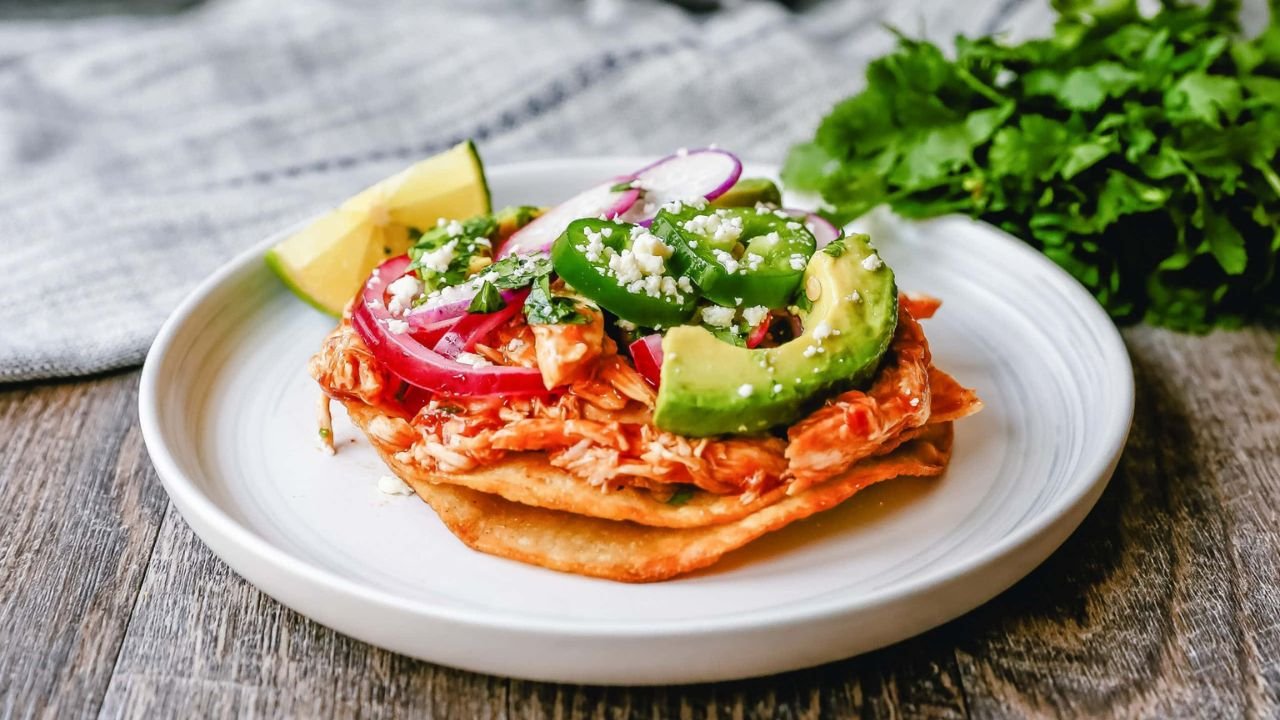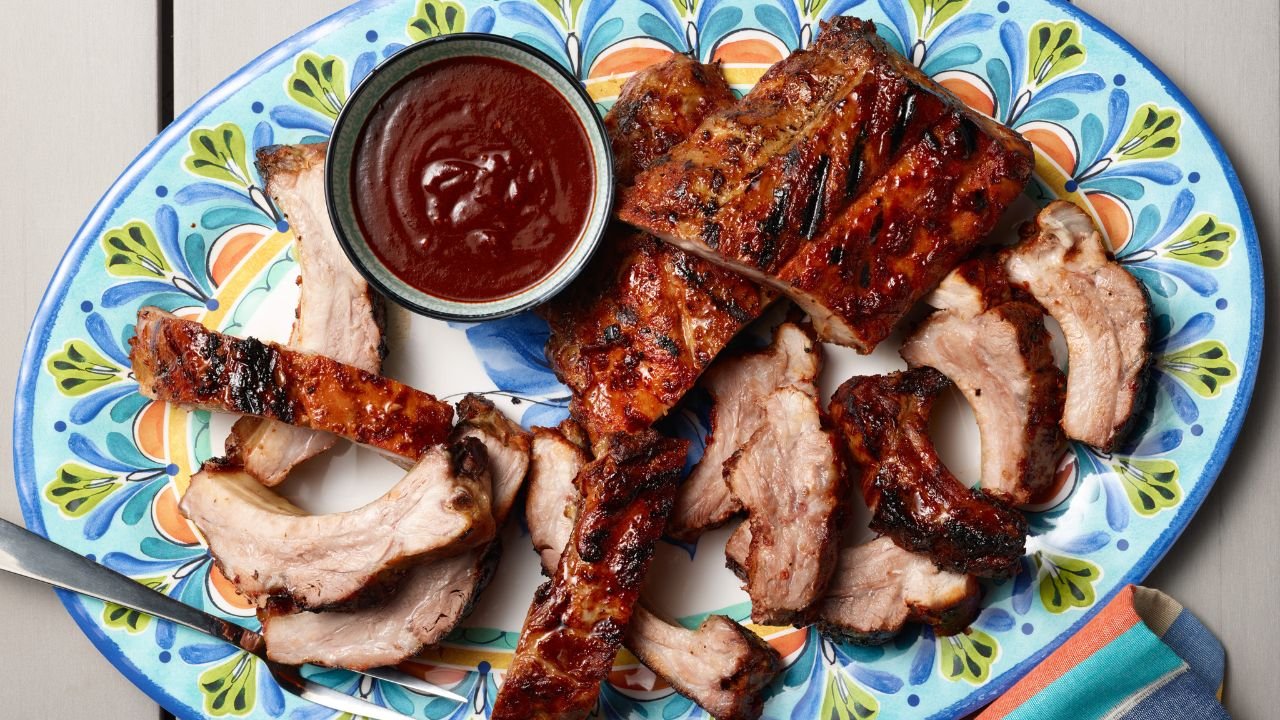Introduction
In recent years, the culinary world has seen a surge in plant-based recipes that are both flavorful and satisfying. Among these, Sticky Gochujang Tofu with Herbs and Peanuts stands out as an irresistibly delicious dish that harnesses the boldness of Korean gochujang (fermented chili paste), the heartiness of crispy tofu, and the freshness of herbs, complemented by crunchy peanuts.
This dish exemplifies how a simple plant-based protein—firm tofu—can be transformed into a sticky, spicy, savory delight with the right sauce and accompaniments. Its balance of heat, sweetness, umami, and freshness makes it a versatile dish suitable for weeknight dinners, meal prep, or even casual entertaining.
Inspired by the Pinch of Yum recipe, this guide will walk you through everything you need to know to make the perfect sticky gochujang tofu with herbs and peanuts, exploring its cultural roots, ingredient choices, step-by-step instructions, variations, health benefits, and presentation ideas.
Origins and Cultural Context
Gochujang: The Heart of Korean Flavor
Gochujang is a staple fermented chili paste originating from Korea, dating back centuries. Made from red chili powder, fermented soybeans, rice malt, and salt, it boasts a complex flavor profile—spicy, sweet, salty, and umami-rich. Its fermentation process lends depth and a slight tang, making it an essential ingredient in many Korean dishes like bibimbap, tteokbokki, and kimchi jjigae.
Tofu: A Global Protein
Originating from East Asia, tofu (soybean curd) has become a worldwide staple due to its versatility, affordability, and nutritional profile. Its ability to absorb flavors makes it an ideal canvas for sauces and seasonings.
Fusion and Modern Plant-Based Cooking
This dish blends traditional Korean flavors with contemporary plant-based cooking techniques, emphasizing texture, bold sauces, and fresh herbs. Its popularity aligns with the global trend of creating flavorful, meat-free meals that are both satisfying and nourishing.
Flavor Profile and Sensory Experience
Core Components
- Tofu: Crispy on the outside, tender inside, with a neutral flavor that soaks up the sauce.
- Gochujang Sauce: Sticky, spicy, slightly sweet, umami-rich, and tangy.
- Herbs: Fresh herbs like cilantro, mint, or basil provide brightness and aromatic contrast.
- Peanuts: Crunchy, nutty, adding texture and flavor depth.
The Perfect Balance
This dish harmonizes:
- Spice: From gochujang, with heat adjustable to preference.
- Sweetness: From the fermented chili paste and optional honey or sugar.
- Umami & Savory: From soy sauce or tamari, and fermented chili.
- Freshness: From herbs, adding vibrancy.
- Crunch & Texture: From peanuts and crispy tofu.
Sensory Experience
Expect a delightful combination of crispy, sticky, spicy, and fresh elements, with contrasting textures—crunchy peanuts and tofu against tender herbs—and layered flavors that evolve with each bite.
Ingredients and Equipment
Main Ingredients
- Firm or Extra Firm Tofu: Pressed for moisture removal, cut into cubes or rectangles.
- Gochujang: Korean fermented chili paste, available at Asian markets or online.
- Soy Sauce or Tamari: For added umami.
- Sweetener: Honey, maple syrup, or agave syrup for balancing heat.
- Rice Vinegar or Lime Juice: To add tang.
- Sesame Oil: For richness and aroma.
- Garlic & Ginger: Freshly minced for depth.
- Vegetable Oil: For frying.
- Herbs: Fresh cilantro, mint, basil, or a combination.
- Peanuts: Roasted, unsalted, roughly chopped.
- Optional Garnishes: Green onions, sesame seeds, chili flakes.
Equipment
- Cutting board and sharp knife
- Tofu press or heavy weight (optional but recommended)
- Mixing bowls
- Whisk or spoon
- Non-stick or cast-iron skillet / frying pan
- Baking sheet or tray (if baking tofu)
- Paper towels or clean kitchen towels
- Spatula or tongs
- Serving bowls or plates
Preparation and Cooking Techniques
1. Tofu Preparation
Pressing Tofu:
To achieve crispy, firm texture, press the tofu to remove excess moisture:
- Wrap the tofu block in a clean kitchen towel or paper towels.
- Place a heavy object (cast iron skillet, cookbook, or tofu press) on top.
- Let press for at least 15-20 minutes, or up to 30 minutes for maximum water removal.
Cutting Tofu:
Once pressed, cut into uniform cubes or rectangles, about 1-inch thick, to ensure even cooking.
2. Cooking the Tofu
Option A: Baking
- Preheat oven to 400°F (200°C).
- Toss tofu cubes with a little oil, salt, and optional cornstarch or arrowroot powder for extra crispness.
- Arrange on a lined baking sheet.
- Bake for 25-30 minutes, flipping halfway, until golden and crispy.
Option B: Pan-Frying
- Heat a few tablespoons of vegetable oil in a skillet over medium-high heat.
- Carefully add tofu pieces.
- Cook for 3-4 minutes per side until golden brown and crispy.
- Remove and drain on paper towels.
Option C: Air Frying
- If using an air fryer, toss tofu with oil and seasoning.
- Cook at 375°F (190°C) for 15-20 minutes, shaking halfway.
3. Making the Gochujang Sauce
In a small bowl:
- Whisk together:
- 2-3 tablespoons gochujang
- 1 tablespoon soy sauce or tamari
- 1 tablespoon rice vinegar or lime juice
- 1 teaspoon honey or maple syrup
- 1 teaspoon sesame oil
- 2 cloves garlic, minced
- 1 teaspoon freshly grated ginger
Adjust quantities based on your spice preference and desired sweetness. The sauce should be thick and sticky but pourable.
4. Stir-Frying or Glazing the Tofu
- In a large skillet or wok, heat a teaspoon of sesame oil or vegetable oil.
- Add cooked tofu and sauté briefly to rewarm.
- Pour the gochujang sauce over the tofu.
- Toss or stir gently to coat evenly.
- Cook for 2-3 minutes, allowing the sauce to become glossy and sticky, coating the tofu thoroughly.
5. Preparing the Herb and Peanut Garnish
- While the tofu is cooking, prepare fresh herbs:
- Chop cilantro, mint, and/or basil roughly.
- Roast or toast peanuts lightly if they aren’t pre-roasted:
- In a dry skillet over medium heat, stir until fragrant.
- Roughly chop the peanuts.
6. Assembling and Serving
- Transfer the coated tofu to serving plates.
- Generously sprinkle with fresh herbs.
- Scatter chopped peanuts over the top.
- Optional: garnish with sliced green onions, sesame seeds, or chili flakes.
- Serve immediately, ideally alongside steamed rice, noodles, or a fresh salad.
Variations and Customizations
Protein Alternatives
- Tempeh: For a firmer, nuttier flavor.
- Seitan or other plant-based proteins: For different textures.
- Chicken or shrimp: For non-vegetarian options.
Sauce Variations
- Add a splash of coconut milk for creaminess.
- Incorporate a dash of fish sauce or oyster sauce for extra umami.
- Mix in a teaspoon of miso paste for depth.
Spice and Sweetness Adjustments
- Increase gochujang for more heat.
- Add a touch of brown sugar or honey for extra sweetness.
- Incorporate chili flakes or fresh sliced chili for more heat.
Additional Toppings
- Pickled vegetables for acidity.
- Sliced radishes or carrots for crunch.
- Fried shallots or garlic chips for extra flavor.
Serving Styles
- Tacos or lettuce wraps with the tofu.
- Over a bed of crispy rice or quinoa.
- As part of a larger Korean-inspired bowl.
Nutritional and Health Benefits
Tofu:
- Excellent source of plant-based protein, providing all essential amino acids.
- Rich in iron, calcium (if calcium-set), and magnesium.
- Contains isoflavones, which may have antioxidant properties.
Gochujang:
- Contains capsaicin, which may boost metabolism and reduce inflammation.
- Fermentation provides probiotics beneficial for gut health.
Herbs:
- Rich in antioxidants and vitamins, supporting immune health.
- Cilantro, mint, and basil add freshness and aid digestion.
Peanuts:
- Good source of healthy monounsaturated fats, protein, and fiber.
- Rich in vitamins E and B6, magnesium, and antioxidants.
Overall:
This dish delivers a nutrient-dense, balanced profile with healthy fats, fiber, and plant-based protein. It’s naturally gluten-free if soy sauce is replaced with tamari.
Tips for Success
- Press tofu thoroughly to achieve maximum crispness.
- Use high-quality gochujang for the best flavor.
- Adjust spice levels according to your heat tolerance.
- Taste and adjust the sauce before glazing the tofu.
- Serve immediately to enjoy the crispy texture and sticky sauce at its best.
- Experiment with herbs; they provide freshness that balances the richness of the sauce and tofu.
- Add a squeeze of lime or lemon just before serving to brighten flavors.
Presentation and Pairings
- Serve over steamed jasmine rice, brown rice, or quinoa.
- Garnish with additional herbs, chopped peanuts, and sesame seeds for visual appeal.
- Pair with light, crisp beverages like lager, sparkling water infused with lime, or green tea.
- For an extra crunch, add crispy wonton strips or fried shallots on top.
Cultural and Culinary Significance
This dish beautifully marries Korean flavors with modern plant-based cuisine, emphasizing bold, spicy, and umami-rich elements complemented by fresh herbs and crunchy nuts. It reflects the global culinary movement toward flavorful, healthful, and accessible vegetarian and vegan dishes.
Gochujang’s fermentation process symbolizes traditional Korean culinary techniques, while tofu’s versatility represents the rise of plant-based proteins worldwide. Combining these ingredients in a sticky, savory sauce showcases how traditional ingredients can be adapted into contemporary, globally-inspired dishes.
Conclusion: A Dynamic, Flavor-Packed Dish
Sticky Gochujang Tofu with Herbs and Peanuts is an inviting, flavorful dish that offers a satisfying combination of textures and tastes. Its balance of spicy, sweet, savory, and fresh elements makes it a versatile addition to any meal repertoire.
Whether you’re a dedicated plant-based eater or simply seeking new flavor adventures, this dish provides a perfect canvas for experimentation and customization. It’s quick to prepare, visually appealing, and packed with nutrients.
By mastering this recipe, you unlock a delicious way to enjoy Korean-inspired flavors in a modern, healthful format. Embrace the boldness of gochujang, the crispiness of tofu, and the freshness of herbs to create a dish that’s sure to impress and satisfy.



